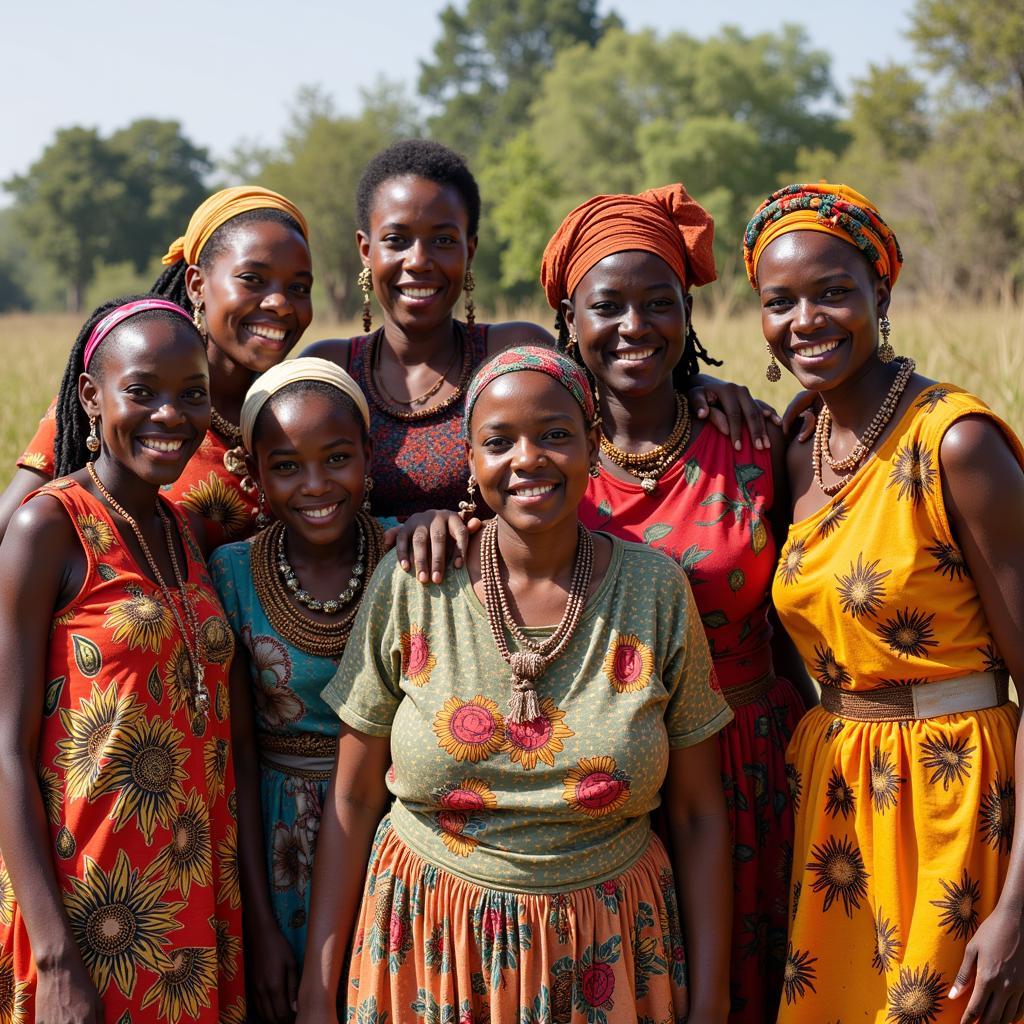Mastering the Art of African Beading Techniques
Beading is an art form that has been practiced in Africa for centuries. From intricate jewelry to stunning decorations, African Beading Techniques have a rich history and diverse range of styles. In this article, we’ll delve into the captivating world of African beading, exploring the different techniques, materials, and cultural significance of this ancient craft.
A Journey Through Time: The History of African Beading
The origins of African beading can be traced back thousands of years. Archaeological evidence suggests that beadmaking and beadwork have been an integral part of African cultures since the Stone Age. Beads were not just adornments; they held deep cultural and spiritual meaning, representing status, identity, and connection to ancestors.
From Trade Routes to Artistic Expression: The Evolution of Beading
The development of trade routes across Africa facilitated the exchange of materials and techniques, leading to the diverse array of beading styles found across the continent. Early beads were often made from natural materials like shells, seeds, bone, and ivory. The introduction of glass beads through trade routes with European traders and Arab merchants in the 15th century brought a new dimension to African beadwork.
Exploring the Techniques: A World of Beading Styles
African beading techniques are as varied as the cultures and tribes across the continent. Here are some of the most common techniques used:
1. Stringing:
This technique involves stringing beads onto a thread or wire to create necklaces, bracelets, and other adornments. Different patterns and combinations of beads can be used to create unique and intricate designs.
2. Crocheting:
Crocheting with beads is a popular technique in many African countries. Beads are woven into the crochet fabric, creating beautiful and textured designs.
3. Weaving:
Bead weaving involves interlacing beads together to create patterns and designs. This technique is commonly used to create intricate belts, purses, and other items.
4. Kumihimo:
This traditional Japanese braiding technique has been adopted by many African beaders to create intricate braids and cords adorned with beads.
Materials of the Craft: From Natural to Modern
The materials used in African beading vary depending on the region and tradition. While glass beads have become a dominant material, many beaders still use natural materials like:
- Seeds: Seeds of various trees and plants are used for making beads. They come in a range of shapes, sizes, and colors, adding a natural touch to the beadwork.
- Shells: Seashells are another common material for African beads. They are often polished and decorated with intricate patterns.
- Bones: Bone beads have been used in Africa for centuries, often reflecting the rich cultural and spiritual beliefs of the people.
- Ivory: While ivory beadmaking is now restricted due to conservation efforts, it was once a prominent material in African beadwork.
Cultural Significance: Beads as Symbols and Stories
African beading is not just a craft; it’s a powerful form of storytelling and cultural expression. Beads often hold symbolic meaning, representing:
- Status: Beads can signify social standing, wealth, or power.
- Identity: Different bead patterns and colors can identify a person’s tribe, family, or village.
- Beliefs: Beads are often used to represent spiritual beliefs, ancestors, and the natural world.
- History: Beadwork can be a visual record of history, preserving stories and traditions through generations.
“Beading is like a language in itself. Each color, each pattern, has a story to tell,” says Mwanaisha Yusuf, a renowned African bead artist from Tanzania.
Modern Day African Beading: A Blending of Tradition and Innovation
African beading continues to thrive in the modern world, with artists adapting traditional techniques and incorporating new materials. Modern beaders are reinterpreting traditional designs, creating contemporary pieces that blend cultural heritage with modern aesthetics.
The Rise of African Beading in the Global Market
The unique beauty and cultural significance of African beadwork have gained international recognition, leading to a growing demand for these handcrafted pieces. Beading is now a thriving industry, empowering many artisans and communities.
“African beadwork is more than just jewelry; it’s a celebration of our heritage and a window into our vibrant culture,” states Aisha Omolo, an award-winning African bead designer from Nigeria.
Where to Find and Learn About African Beading
If you’re interested in learning more about African beading, there are many resources available:
- Online communities: There are active online communities dedicated to African beading, where you can connect with other enthusiasts, share techniques, and find inspiration.
- Workshops and classes: Many African beaders offer workshops and classes in traditional techniques. These hands-on experiences provide a valuable opportunity to learn and appreciate the artistry of African beading.
- Local craft markets: Many African countries have bustling craft markets where you can find a wide variety of beadwork made by local artisans.
Conclusion
African beading is a testament to the creativity and artistry of African people. From ancient traditions to modern innovation, this art form continues to captivate the world with its beauty, cultural significance, and enduring power. Explore the world of African beading and discover the stories woven into each bead, each color, and each intricate design.
FAQs
- Q: What are the most popular beading materials in Africa?
A: Glass beads, seeds, shells, and bone beads are some of the most popular materials.
- Q: How can I learn to bead in the African style?
A: You can learn by taking workshops, joining online communities, or browsing tutorials and videos online.
- Q: Where can I buy authentic African beaded jewelry?
A: You can find authentic African beaded jewelry at local craft markets, online platforms, and through independent artisans.
Remember: Explore the world of African beading and be inspired by the rich heritage and artistry of this ancient craft.

